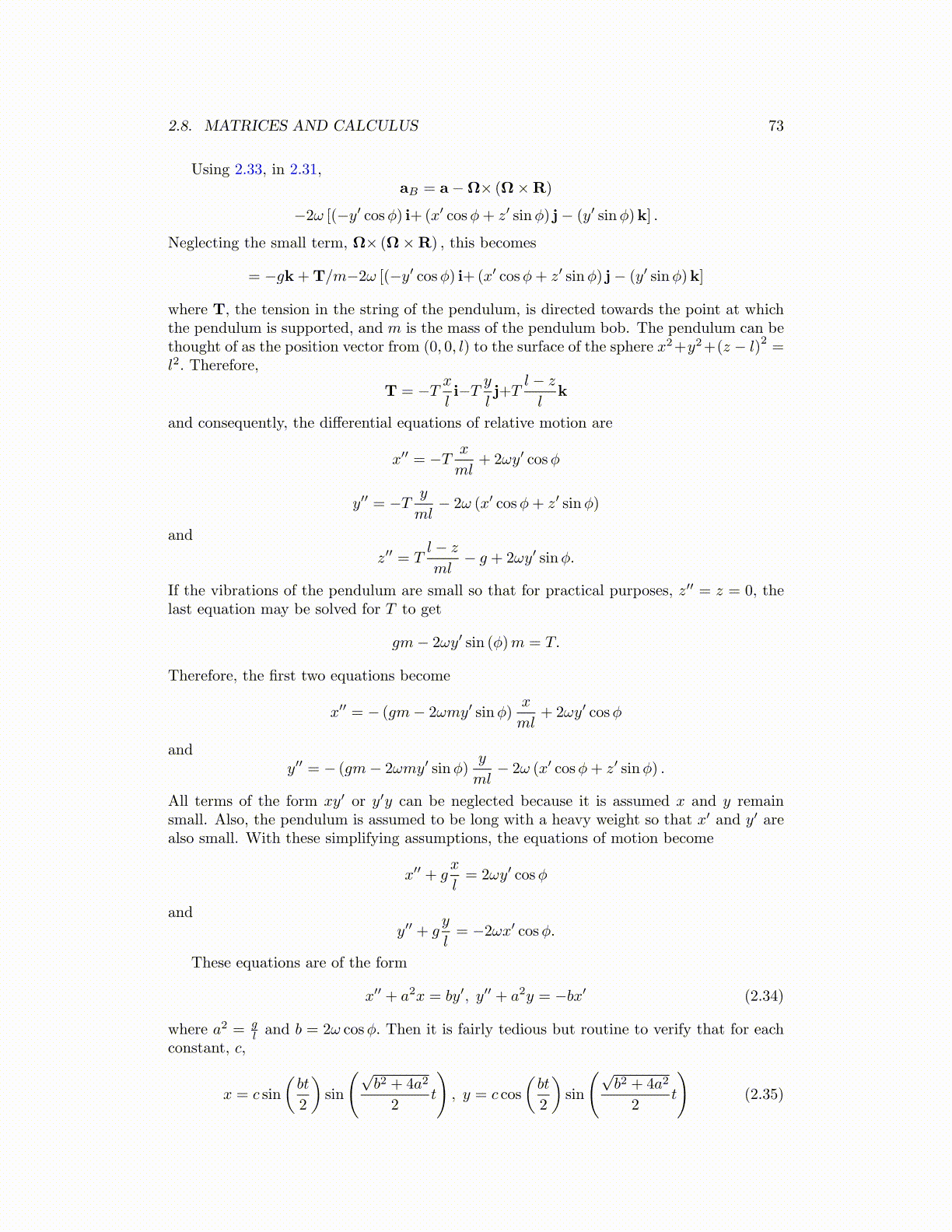
2.8. MATRICES AND CALCULUS 73
Using 2.33, in 2.31,aB = a−Ω× (Ω×R)
−2ω [(−y′ cosϕ) i+(x′ cosϕ+ z′ sinϕ) j− (y′ sinϕ)k] .
Neglecting the small term, Ω× (Ω×R) , this becomes
= −gk+T/m−2ω [(−y′ cosϕ) i+(x′ cosϕ+ z′ sinϕ) j− (y′ sinϕ)k]
where T, the tension in the string of the pendulum, is directed towards the point at whichthe pendulum is supported, and m is the mass of the pendulum bob. The pendulum can bethought of as the position vector from (0, 0, l) to the surface of the sphere x2+y2+(z − l)
2=
l2. Therefore,
T = −T xli−T y
lj+T
l − z
lk
and consequently, the differential equations of relative motion are
x′′ = −T x
ml+ 2ωy′ cosϕ
y′′ = −T y
ml− 2ω (x′ cosϕ+ z′ sinϕ)
and
z′′ = Tl − z
ml− g + 2ωy′ sinϕ.
If the vibrations of the pendulum are small so that for practical purposes, z′′ = z = 0, thelast equation may be solved for T to get
gm− 2ωy′ sin (ϕ)m = T.
Therefore, the first two equations become
x′′ = − (gm− 2ωmy′ sinϕ)x
ml+ 2ωy′ cosϕ
andy′′ = − (gm− 2ωmy′ sinϕ)
y
ml− 2ω (x′ cosϕ+ z′ sinϕ) .
All terms of the form xy′ or y′y can be neglected because it is assumed x and y remainsmall. Also, the pendulum is assumed to be long with a heavy weight so that x′ and y′ arealso small. With these simplifying assumptions, the equations of motion become
x′′ + gx
l= 2ωy′ cosϕ
andy′′ + g
y
l= −2ωx′ cosϕ.
These equations are of the form
x′′ + a2x = by′, y′′ + a2y = −bx′ (2.34)
where a2 = gl and b = 2ω cosϕ. Then it is fairly tedious but routine to verify that for each
constant, c,
x = c sin
(bt
2
)sin
(√b2 + 4a2
2t
), y = c cos
(bt
2
)sin
(√b2 + 4a2
2t
)(2.35)